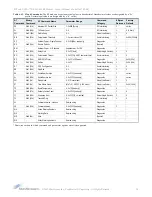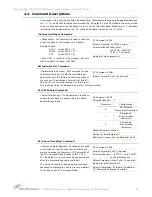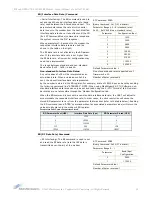
9XTend
‐
NEMA™
RS
‐
232/485
RF
Modem
–
Product
Manual
v2.x4x
[2007.01.04]
©
2007
MaxStream,
Inc.,
Confidential
&
Proprietary
‐
All
Rights
Reserved
16
3.1.4. Transparent Operation
By default, XTend RF Modems operate in Transparent Mode. The modems act as a serial line
replacement - all UART data received through the DI pin is queued up for RF transmission. When
RF data is received, the data is sent out the DO pin.
When the RO (Packetization Timeout) parameter threshold is satisfied, the modem attempts to ini-
tialize an RF transmission. If the modem cannot immediately transmit (for instance, if it is already
receiving RF data), the serial data continues to be stored in the DI Buffer. Data is packetized and
sent at any RO timeout or when the maximum packet size is received.
The modem operates as described above unless the Command Mode Sequence is detected. The
Command Mode Sequence consists of three copies of the command sequence character [CC
parameter] surrounded by the before and after guard times [BT & AT parameters].
If the DI buffer becomes full, hardware or software flow control must be implemented in order to
prevent overflow (loss of data between the host and modem).
3.1.5. API Operation
API (Application Programming Interface) Operation is an alternative to the default Transparent
Operation. The API is frame-based and extends the level to which a host application can interact
with the networking capabilities of the module. When in API mode, all data entering and leaving
the RF modem is contained in frames that define operations or events within the modem.
Transmit Data Frames (received through the DI (Data In) pin) include:
• 16-bit address
Receive Data Frames (sent out the DO (Data Out) pin) include:
• Showing a received RF packet (16 bits only)
• Response to a TX (Transmit) packet
• Showing events such as hardware reset, watchdog reset, asynchronous events, etc.
The modem will send data frames to the application containing status packets; as well as source,
RSSI and payload information from received data packets.
API operation option facilitates many operations such as the examples cited below:
To implement API operations, refer to ‘API Operation’ sections [p47].
-> Change destination addresses without having to enter command mode
-> Receive success/failure status of each RF packet
-> Identify the source address of each received packet
















































